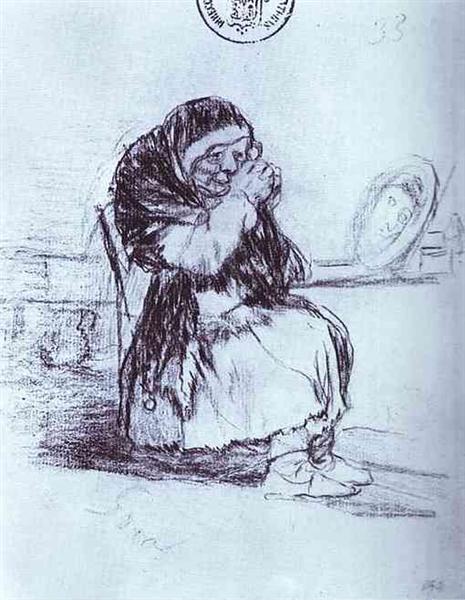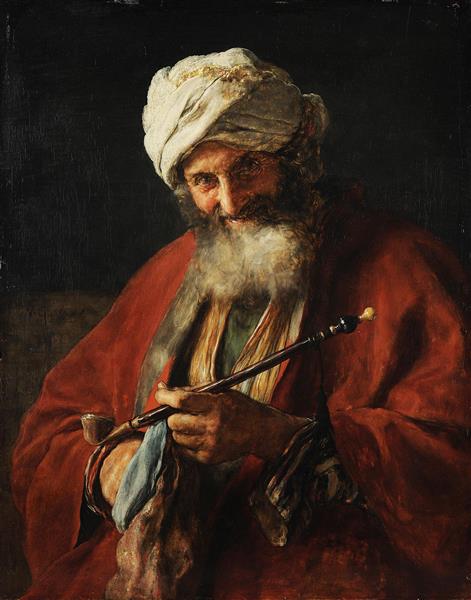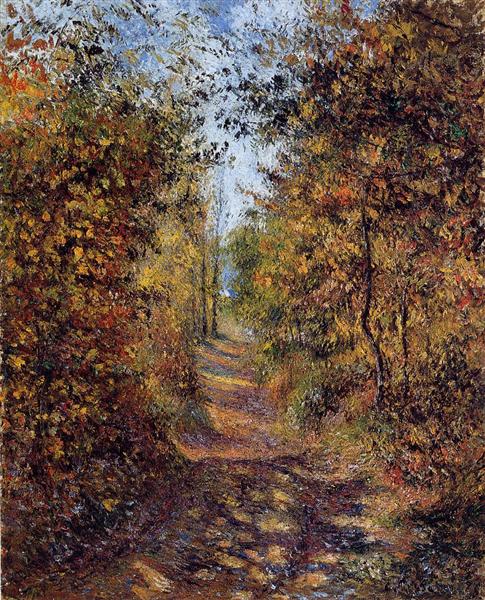Description
The work "mood III: those who stay" (1911) by Umberto Boccioni is inscribed at a crucial moment in art history, where futurism emerged as a vital and renovating movement in the pictorial field. Boccioni, one of the greatest exponents of this current, seeks in this painting not only to represent reality, but to capture the essence of time and human experience in an explosion of shapes, colors and emotions.
When observing the work, the first thing that attracts attention is the complexity of its composition. The scene seems to be loaded with an energy that manifests through a dynamic intertwined of figures and shapes that suggest movement and transformation. The silhouettes of the characters are vaguely identifiable, almost ghostly, which reinforces the idea of an emotional state in transition. Boccioni moves away from the classic portrait and presents an abstract interpretation of human figures, where bodies merge with the environment, generating a sense of internal and struggle agitation in which the physical and the psychological are constantly friction.
The use of color in "those who stay" is extremely significant to understand the atmosphere of the work. The palette of terrible and gray tones, nuanced with more vibrant brushstrokes, suggests a melancholic and tensioning environment. Dark tones predominate, evoking a feeling of sadness and memory, in contrast to more luminous flashes that seem to represent fragments of hope or the memory of a brighter past. This chromatic dichotomy reflects the concern of those who remain in a place or in an emotional state, facing the paralysis of time while the change occurs around it.
The work is part of a broader cycle that Boccioni developed on moods, where human reactions are examined before the modernity and dynamism of the contemporary world. However, "those who stay" are distinguished by their focus on introspection and permanence, in contrast to other works of the series that address flight or movement. In this sense, Boccioni invites the viewer to reflect on the nature of existence, the permanence of emotions and internal struggle that often accompany external changes.
The work also highlights a characteristic element of futurism: the exploration of non -linear time. Boccioni seeks to capture the instant present but at the same time represent it in its temporary complexity. This tension between immediacy and memory becomes a recurring theme, where each figure, in its dissolution and reconfiguration, tells us about the constant struggle between the desire to move forward and the inevitability of emotional stagnation.
As part of the evolution of art at the beginning of the twentieth century, "mood III: those who remain" is not only a representative work of the search for Boccioni to capture the essence of the human being in its relationship with the modern world , but also anticipates concerns that would continue to resonate in future movements. The interrelation between the personal and the collective, the physical and the emotional, reveals a depth in its conception that remains relevant and provocative in the analysis of contemporary art.
In summary, "mood III: those who remain" transcends their temporal context to become a universal reflection on the human condition. Through the mastery in its composition, the emotional use of the color and exploration of the human psyche, Boccioni offers us a work that defies our perception of time and ourselves, inviting us to remain and contemplate the internal landscape of which you are They remain.
KUADROS ©, a famous paint on your wall.
Hand-made oil painting reproductions, with the quality of professional artists and the distinctive seal of KUADROS ©.
Art reproduction service with satisfaction guarantee. If you are not completely satisfied with the replica of your painting, we refund your money 100%.








